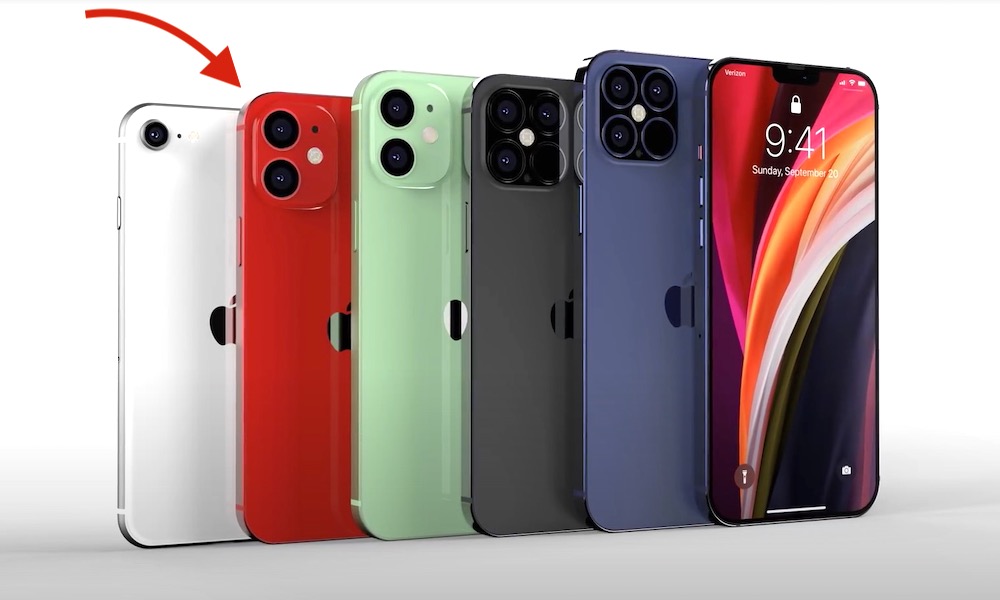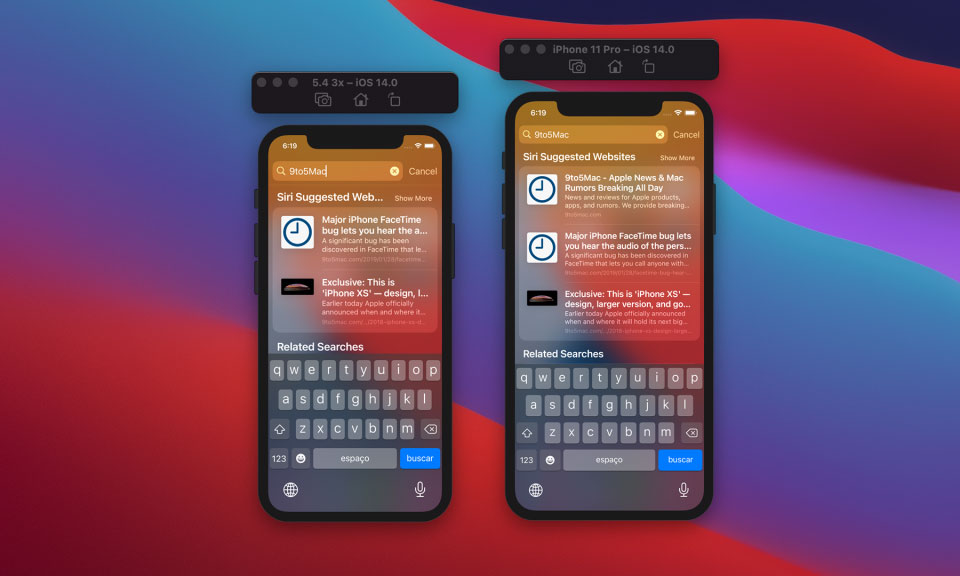The 5.4-inch iPhone 12 Is Coming, and iOS 14 Is Ready for It
 Credit: EAP
Credit: EAP
Toggle Dark Mode
By now it shouldn’t be a big revelation that Apple plans to release a smaller version of the iPhone 12 this year — we’ve been hearing rumours to that effect for well over a year now, and while it took a while for the report to get distilled down to some more specific details on what Apple’s iPhone 12 lineup will actually look like, one of the most consistent reports has been that a smaller, 5.4-inch iPhone would be part of it.
At this point, however, it’s pretty clear that we’re going to see four iPhone 12 models. The iPhone 11 Pro and iPhone 11 Pro Max will be directly succeeded by two new similar models, likely named iPhone 12 Pro and iPhone 12 Pro Max—although we won’t know know their names with any certainty until Apple unveils them this fall.
Reports suggest that these will get a squared-edged design, similar to the current iPad Pro, while also seeing a slight bump in screen sizes to 6.1 inches and 6.7 inches, respectively.
This will put the “iPhone 12 Pro” in the same screen size class as the non-Pro iPhone 11, and Apple is also expected to replace that model this year with a standard “iPhone 12” that will feature the same screen size, effectively making it a direct successor to the iPhone 11 and iPhone XR before it. However, for the first time this year Apple will be dividing that entry-level model into a lineup in its own right, introducing a smaller, 5.4-inch version of the “iPhone 12.”
Again, the names for all of these remain unclear, especially for the standard models, with reports suggesting Apple could go with “iPhone 12 mini” for the smaller one or “iPhone 12 Max” for the larger, or it could do something entirely unexpected. Our money is on the latter.
By all reports, however, the 5.4-inch “iPhone 12” will come in at around the same size as the original iPhone SE, making it the most pocketable iPhone that Apple has produced in years.
Despite the fact that a 5.4-inch screen size sounds a lot bigger than the 4-inch screen of the 2016 iPhone SE, the narrowing of the bezels will likely make a big difference in keeping the size down.
In fact, the actual physical dimensions of the 2016 iPhone SE, corner-to-corner, are about 5.4 inches, so while the smaller iPhone 12 may not be quite as small as the iPhone SE, we suspect Apple will be able to get pretty close.
Display Zoom in iOS 14
Although it’s not like we needed any extra confirmation, it’s interesting to note that iOS 14 is apparently already prepared to handle the smaller screen size,
Digging into the most recent iOS 14 beta, the team at 9to5Mac discovered that Apple has actually added its Display Zoom feature to the smaller iPhone X, iPhone XS, and iPhone 11 Pro models. Since these are already the smallest iPhones among Face ID models, the addition of Display Zoom on these devices points to the existence of an even smaller iPhone model.
Display Zoom is a feature that was added when Apple released the iPhone 6 back in 2014 to accommodate those users who preferred a larger user interface, and it worked simply by simply rescaling the entire UI — icons, buttons, text, and everything else — to that of a smaller iPhone.
So, for example, turning on Display Zoom on the 4.7-inch iPhone 6 basically just grabbed the 4-inch iPhone 5s layout and scaled it up to the 4.7 inch screen. Likewise, enabling it on the 5.5-inch iPhone 6 Plus would switch it to use a scaled-up version of the 4.7 inch iPhone 6 display layout.
This feature carried on all of the way through the iPhone 8 and iPhone 8 Plus, and it’s even available on the 2020 iPhone SE in the same manner. However, since the iPhone X was the smallest iPhone in its class, with a different aspect ratio for the screen, Apple never enabled this feature on the iPhone X, as there were no iPhones with screens smaller than 5.8 inches that has the same aspect ratio.
When later iPhone XS and iPhone 11 Pro models came along, the “Max” versions got the Display Zoom feature, allowing the 6.5-inch iPhones to use the 5.8-inch “non-Max” layouts, and similarly the 6.1-inch iPhone XR and iPhone 11 also included it because they actually use the 6.5-inch screen layout from the Max models scaled down to a lower resolution for the 6.1-inch display.
The appearance of Display Zoom on the 5.8-inch iPhone models prompted 9to5Mac to dig deeper, and by employing the same technique that was used to determine the screen resolution of the iPhone XS Max back in 2018, they dug into the latest iOS 14 beta and discovered that Apple has actually been adapting the iOS interface for a smaller resolution screen.
By forcing the iOS Simulator to run in a smaller resolution — 960 x 2079 — 9to5Mac was able to observed the scaled-down interface, which is almost certainly being prepared for a 5.4-inch screen. It was also telling that the iOS Simulator crashed entirely when they tried it with other resolutions, suggesting that it’s this specific resolution that Apple is aiming for with the 5.4-inch iPhone.
Using the “Physical Size” option in the iOS Simulator, which replicates that actual size of each device on the screen of the Mac, they were also able to confirm what we’ve suspected for a while: that the 5.4-inch iPhone will be similar in size to the 2016 iPhone SE, with an edge-to-edge display.
The math also suggests that the 5.4-inch iPhone could have a higher pixel density than current LCD iPhone models, and although 9to5Mac says that they haven’t ruled out the possibility of Apple maintaining a lower pixel density in the smaller iPhone, they weren’t able to make the iOS Simulator run in any lower resolutions without crashing.







